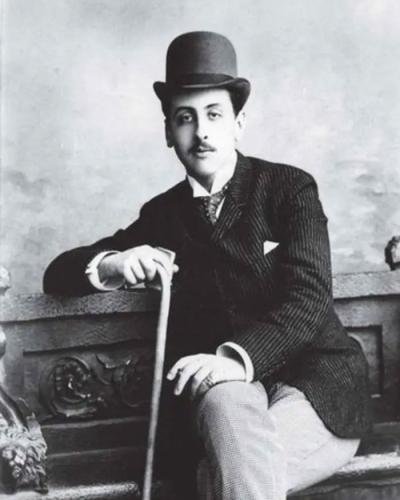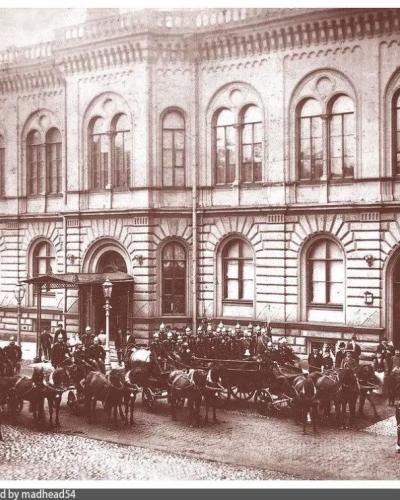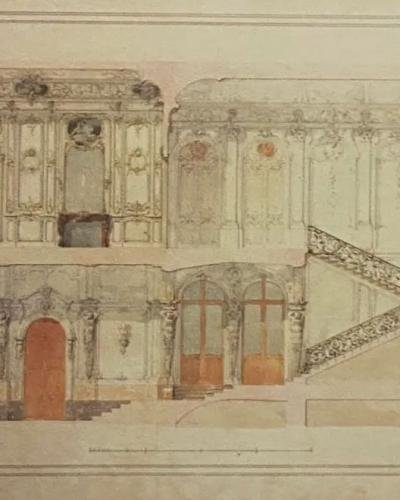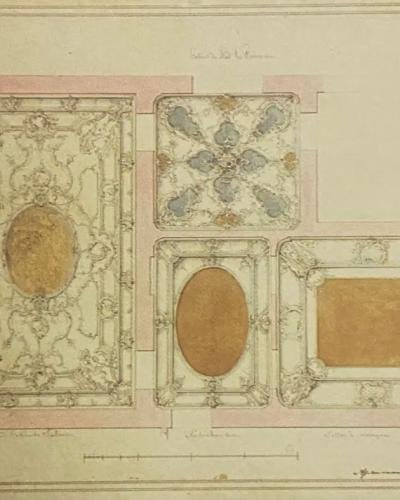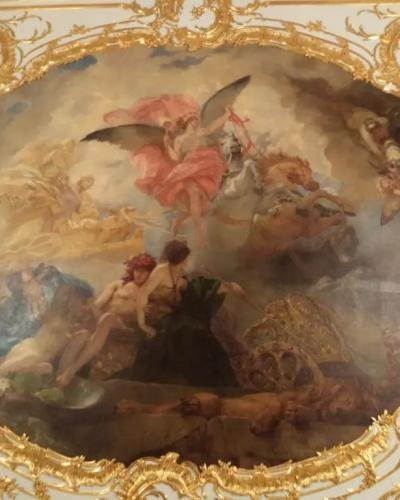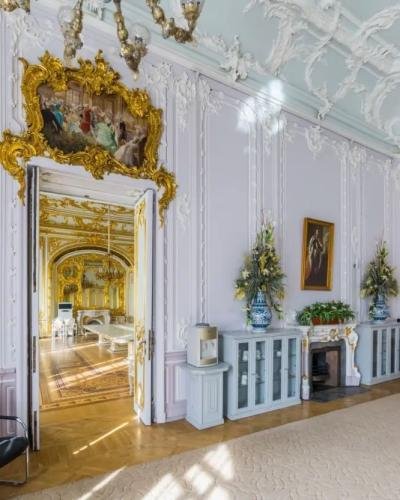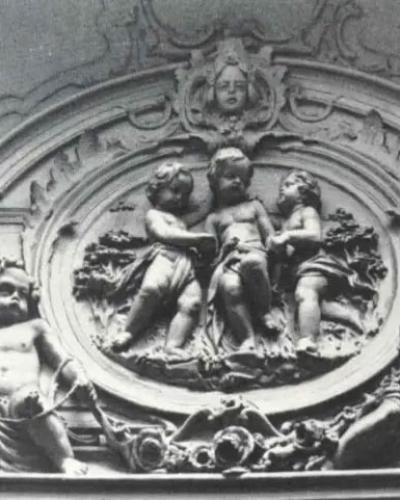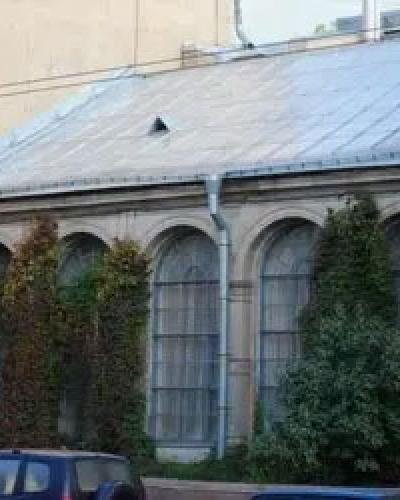By EDF Academic Member in Spain, Antonio Perez Caballero
Elim Pavlovich Demidov, 3rd Prince of San Donato (1868-1943), was the only son of Princess Maria Meshcherskaya and Pavel Pavlovich Demidov, 2nd Prince of San Donato. Due to his mother passing away tragically only two days after his birth, the Prince grew extremely close to the Finnish legendary beauty, Aurora Karamzina, his paternal grandmother. The exquisite lady brought him up and showered a consistent stream of love on her grandson. The ancient lineage and proximity to Aurora had the inevitable result: Elim was effortlessly dashing, tall, and every inch an Russian Aristocrat. Everything in his person spoke of centuries of refinement. In 1890, he graduated with a silver medal from the Alexander Imperial Lyceum, becoming a ‘Kamer Junger’ at Court and passing then to work in the Ministry of Foreign Affairs. Five years earlier, aged only 18, his father had died, leaving also as issue from his second marriage with Princess Elena Petrovna Trubetskaya, six half-sisters and brothers.
As 3rd Prince of San Donato, he was the principal beneficiary of an immeasurable fortune. Today it is difficult to understand the magnitude of the inheritance that comprised vast tracts of land, mining and metallurgical industries, palaces and jewels, that would have dazzled the Kings of England. Elim was truly a king in his own realm. Newspapers abroad, speculating about the richest man on earth, wrote “the wealth of Elim Demidov is beyond calculation”.
In 1894, he was appointed chief-of-staff of the embassy in London, and in 1897 he became second secretary of the Russian embassy in Great Britain with the rank of court counselor. In 1902, Elim Demidov was appointed to the post of first secretary of the embassy in Madrid, and in 1903, the same role, but in Copenhagen. This was a very important assignment, if we recall the close family ties of the Dowager Empress with the Danish royal family. During the years 1905 to 1908, Elim was the first secretary of the embassy in Vienna where his close relations, Anatole Demidoff, 1st Prince of San Donato (1813-1870), earlier had served with distinction during the time of the Crimean War.
Upon reaching the age of majority, his younger half-brothers began to receive a yearly income in the amount of about 750,000 rubles for their share in the property, but they constantly demanded (and received) more than this amount. At the beginning of Elim’s diplomatic career, so from 1890 to1895, he often was “out of the state”, so failed to tend to his regular duties that led his supervisors to provide poor marks concerning the quality of his work. In 1893, E.P. Demidov married the daughter of the adjutant general, Minister of the Imperial Court, Count Illarion Ivanovich Vorontsov-Dashkov, Countess Sofia Illarionova (1870-1953).
The Foreign Minister V. N. Lamsdorf wrote, “This little boy, a very rich son-in-law of the Minister of the Court, takes his official duties lightly, setting a demoralising example for his colleagues”.
With the dawn of the new century, the Sovereign Emperor, Nicholas II chose Prince Elim as Russian Ambassador to Greece, simply the best Russian representation that he could have imagined. On the eve of the First World War, Elim Pavlovich Demidov, 3rd Prince of San Donato, was promoted to the rank of ‘Real Councilor of State’, and served as an extraordinary envoy and plenipotentiary minister in Athens under Constantine I, King of Greece (1868-1923). For his important contribution, Elim was awarded the Orders of St. Anna, 2nd class, St. Vladimir, 4th class, as well as foreign awards that included the service medals of Spain, the Emirate of Bukhara, Denmark, Turkey, Austria-Hungary, Great Britain, and France.
Elim also was the recipient of one-half of the inheritance of his great-uncle, through the Meshcherskys and adoptive father who, since 1885, was the Industrialist, Yuri Stepanovich Nechaev-Maltsev, who had passed away in 1913. The inheritance positioned Elim Pavlovich as the last owner of the famous residence in 30 Sergueevskaya Street.
The history of the plot is long and complex and starts in the 1840s with Prince L. V. Kochubey. He employed the fashionable architect Garald A. Bosse and Roman I. Kuzmin to create a Renaissance Palazzo that was constructed entirely in Padust stone so creating something out of Florence, with its imposing truly massive facade, rusticated, and with the regal ‘bel etage’ marked by powerful arches subdivided into two windows by the use of slender columns.
When approaching this mansion, we might even consider it to be two plots, for regardless of the cost, the mansion had on the left an enormous winter garden all along the street occupying the space of many other neighbouring large residences. Preserved miraculously until this day the sight of the glass house in such a privileged spot is still breathtaking.
It was at the start of the 1880s that Nechaev-Maltsev became the proprietor, just when he had been nominated ‘Conseiller d’Etat Imperial’. Enthused with his new rank, he endeavoured to create a palace fit to receive the Imperial Family. He was very much involved in the restoration and revival of its interiors. The architect Rezanov recommended was Leonty Benois for the big task ahead. Netchaev-Maltsev studied every single detail, including ventilation and noted once “During the dance [the temperature] did not drop below 15 and did not exceed 16 after the mazurka”. An apartment for his great nephew had been also disposed on the right wing overlooking the parade courtyard and united to Nechaev-Maltsev by a common library.
Benois followed the desires of his master, who desired a ballroom decorated with as many mirrors as possible in golden frames, he wished also in the corridors and other rooms, the same gold and mirrors scheme, though Benois respected most of the elegant and delicate work of G. Bosse, while rearranging and ordering painted ceilings in several halls and plafonds. The interiors revolved around a central imperial staircase leading to a grand hall, to the right of which we find the Ballroom and Dinning Hall (overlooking the parade courtyard from the left wing), and beyond the Ballroom, the Winter Garden, which, the owner complained about the ‘tall’ palm trees that forced him to raise the ceiling twice in those years costing him 20.000 rubles ( a huge amount in the 1890s). By1886, everything was ready and the newly decorated palace was filled with treasures, antiques, paintings and priceless pieces of art and furniture.
Inherited in 1913, the Demidov couple had little time to enjoy the sumptuous residence that Elim had been bequeathed. In 1917 Elim Pavlovich left his post and, living in Athens, remained honorary attaché of Yugoslavia in Greece. In retirement, Demidov studied the history of Russian literature, wrote sketches about Pushkin and Turgenev in French, and published a book of his French poetry in Paris. Elim died in 1943 in Athens and is buried in the parish of the Russian Orthodox Church.
